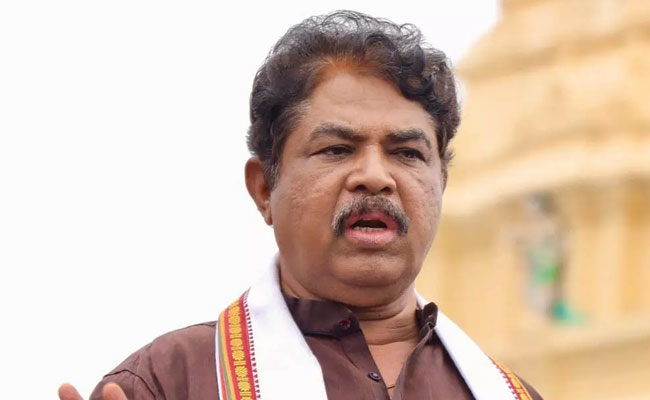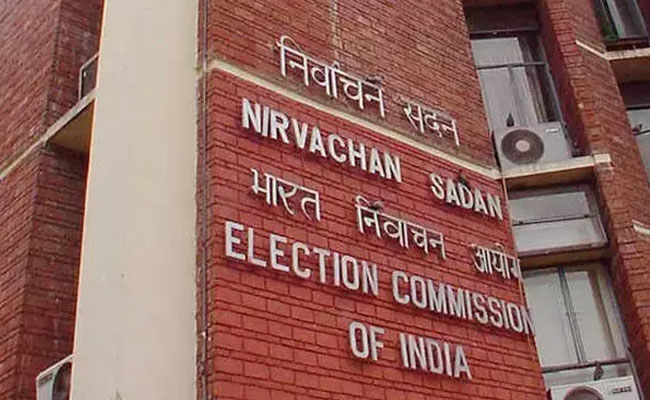It is a reflection of the times that we are living in that there is inevitably a political angle to people embracing the cause of the environment and wildlife. At the same time, a genuine love for the environment and wildlife attracts the moniker, ‘anti-development.’ Recently, when a pregnant elephant died tragically after eating a pineapple stuffed with crackers, the Centre responded immediately and ordered an investigation.
From Maneka Gandhi to an ordinary party worker, everyone in the BJP shed tears for this tragedy. But there was hardly anyone who mourned the deaths of migrant workers who died on highways due to hunger. This is not to say that we must neglect incidents such as the death of the elephant but to understand that we can prevent such tragedies in the future only if our tears and sorrow are genuine.
The day the elephant died tragically in Palakkad district, an environmental disaster occurred in Assam leaving its biodiversity completely vulnerable. The disaster was the result of leakage of natural gas from Oil India Limited (OIL), a nearby oil plant, that entered the Dibru-Saikhowa National Park near Baghjan in Assam and has not stopped since May 27.
Subsequently, a fire was also seen in the oil plant on June 10 and the fire is still raging. As a consequence of the leakage, two people lost their lives and more than 3000 locals have been evacuated. Even after the leak continued unabated for two weeks, the incident did not attract the attention of the mainstream media. Only after the death of two persons did the media turn its attention to the accident.
But this was nothing compared to the media focus on the Vishakapatnam chemical gas tragedy. On May 7, eight persons lost their lives in Vishakapatnam after poisonous chemicals leaked from LG Polymers. This accident created an atmosphere of fear in the coastal city so much that the media, in fact, compared this to the 1984 Bhopal gas leak.
After the massive forest fire in the Amazon forests in South America, the topic of environmental protection has captured the imagination of people all over the world and has given rise to a global debate. But this interest has brought to light another dimension to our obsessions with optics. Instead of spending time trying to understand the reasons for such accidents, we react to pictures and videos that go viral in the mainstream media and social media.
If a photograph from Amazon or Kerala can awaken our conscience, the photograph of the carcass of the endangered Gangetic Dolphins recovered in the Maguri-Motapung Beel swamp close to where the oil leak occurred in Assam should equally disturb us. The oil leak is bound to have a dangerous impact on the biodiversity of the area with innumerable variety of fish, snakes, birds, and other living organisms in the wetland area already having died after the oil leak.
The carcass of Gangetic Dolphins was found by the locals on May 31, four days after which the pregnant elephant was found dead in Kerala. Former minister Maneka Gandhi not only condemned the death of the elephant but tried to use the incident to create a communal divide. But the oil spillage in Assam that has had a devastating impact on the rich biodiversity of the area did not attract the attention of this wildlife activist. Other than a few people from the North East, no celebrity or wildlife activist or public personality has raised their voice about the biodiversity disaster in Assam.
Such selective responses lead us to wonder whether politicians value wildlife in the North East and whether they are even bothered about their survival. After the oil spillage, OIL, the public sector corporation, was slow in responding to the accident and much later invited foreign experts to provide suggestions on preventing the leak. By then, the damage caused to the local biodiversity and agricultural land was irreparable.
Assam has repeatedly seen attempts of industrialization that have been a cause of grave concern. Despite protests by various organizations, permission was granted to drill oil wells in seven areas near the same Dibru-Saikhowa National Park. The company argued that it would not conduct drilling operations in areas in eco-sensitive zones. A few days before this, the National Board for Wildlife (NBW) gave permission for coal mining, again in one of the most eco-sensitive zones, Dehing Patkayi Elephant Reserve Forest.
North East India has been in the news in recent days for several reasons. The dense forest area and the rich presence of mineral ore in the North East have caught the attention of industrialists. Thanks to the Adivasis and tribals in these parts who protect the forests, the North-Eastern states have retained their greenery and rich forest belts.
Citing the menace of Naxalism, the government is building national highways to favor big industries and also trying to prevent industrial accidents from getting publicized. We have reached a situation where we remember the North East only during Naxal operations.
On June 4, ten employees lost their lives, and more than 40 employees were injured in an explosion in a factory in Gujarat. The incident that occurred in the Prime Minister’s home state was covered up.
It’s very clear that those favoring a few corporate giants are behind such a cover-up. Today, we have reached a situation where enemy states do not have to attack India using missiles. The country has danger lurking in the form of several reactors and industries. If the government does not focus on their protection and safety, these symbols of development have the capacity to very well destroy our future.
Let the Truth be known. If you read VB and like VB, please be a VB Supporter and Help us deliver the Truth to one and all.
Bengaluru (PTI): Targeting Chief Minister Siddaramaiah and the Congress government in Karnataka on corruption, BJP leader R Ashoka on Friday said, being foolish was forgivable, but being "shameless" in public life was not.
The Leader of Opposition in the state Assembly claimed that in just 30 months of its tenure, the Congress administration has broken every previous record on corruption-related controversies.
He was responding to Siddaramaiah's post on 'X' on Thursday hitting back at the BJP, stating that Upa Lokayukta Justice Veerappa's claims of "63 per cent corruption" were based on his report in November 2019, when BJP's B S Yediyurappa was the CM.
"But Ashoka, without understanding the Upa Lokayukta's statement properly, has ended up tying the BJP's own bells of sins onto our heads and has effectively shot himself in the foot," the CM had said, as he accused Ashoka of foolishness for trying to twist Veerappa's statement to target the current government.
Responding, Ashoka said, "it is one thing to be called foolish in politics, that can be forgiven."
"But in public life, especially in the Chief Minister's chair, one must never become shameless," Ashoka posted on 'X' on Friday addressing Siddaramaiah.
Noting that the CM himself had admitted on the floor of the Assembly that a Rs 87 crore scam took place in the Valmiki Development Corporation, he said that when a CM acknowledges such a massive irregularity inside the floor of the House, the natural expectation is immediate action and accountability.
"But instead of taking responsibility, you continue in office as if nothing has happened. What should the people of Karnataka call this, if not sheer shamelessness," he asked.
Pointing out that the CM's Economic Advisor and senior Congress MLA Basavaraja Rayareddy had publicly stated that under Congress rule, Karnataka has become No.1 in corruption, Ashoka said, "Yet, you still cling to the Chief Minister's chair without a moment of introspection. What should the people of Karnataka call this, if not sheer shamelessness."
Senior Congress MLA C R Patil had exposed the "money for House" racket in the Housing Department and even warned that the government would collapse if the details he has were made public, Ashoka said.
"Despite such serious allegations from within your own party (Congress), you neither initiated an inquiry nor acted against the concerned minister. What should the people of Karnataka call this, if not sheer shamelessness," Ashoka asked the CM.
Highlighting the "40 percent commission" allegation Congress made against the previous BJP government, the opposition leader said, the commission that the Siddaramaiah government appointed concluded that the accusation was baseless.
"After your own panel demolished your own claim, what moral right do you have to continue repeating that allegation. What should the people of Karnataka call this, if not sheer shamelessness," he asked.
For the last two and a half years, Karnataka has been 'drowning' in corruption, scandals, irregularities and allegations across departments. Ashoka said, "If I begin listing every case that emerged under your government, even 24 hours would not be enough."
"And the most tragic aspect of your administration is this: the unbearable pressure, corruption demands and administrative harassment under your government pushed several officers and contractors into extreme distress - including the suicide of Chandrasekharan which exposed the Valmiki Development Corporation scam - a sign of how deeply broken the system has become under your watch," he said.
Instead of fixing this hopeless environment, the government has tried to bury every complaint and silence every voice, he charged.
"Being foolish is forgivable, but being shameless in public life is definitely not."
"When your own ministers admit scams, when your own advisors certify Karnataka as No.1 in corruption, and when your own MLAs expose rackets inside your departments - clinging to power without accountability is not leadership. It is shamelessness in its purest form." PTI KSU
Earlier on Thursday Ashoka had demanded that the corruption case and allegations in the state against the Congress government be handed over to a CBI investigation, citing a reported statement by Upalokaykta Justice Veerappa alleging "63 per cent corruption", following which Siddaramaiah hit back at the BJP leader.




